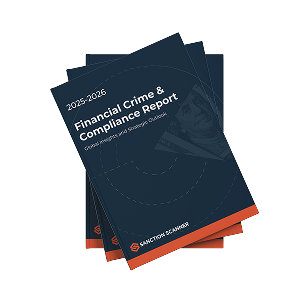For cross-border payments, speed and accuracy are everything. That's why the SWIFT GPI Tracker is great. It absolutely converted how global bills paintings. For us, having the capacity to trace bills the manner you trace a cargo makes the whole manner an lousy lot extra current and safe.
What Does GPI Stand For?
GPI stands for Global Payments Innovation, an innovation released via SWIFT (Society for Worldwide Interbank Financial Telecommunication). It's a far-wanted enhance to the traditional pass-border charge structures, if you inquire from us. It's all about what is most important in recent times—velocity, transparency, and actual-time tracking. GPI gives banks and their customers a much greater controlled experience. Here's what I discovered most useful:
• Live tracking: You generally know where your charge is.
• Confirmation indicators: You’re immediately notified whilst the coins reach the receiver.
• Transparency into delays: If something is wrong, you can see where it went wrong.
• Fewer grievances: Clients complain much less as they may be able to see the subjects themselves.
What Is the SWIFT GPI Tracker?
In reality, the GPI Tracker is a type of GPS for moving-border bills. For us, the differentiator is the Unique End-to-End Transaction Reference (UETR) which is assigned to every fee. The code allows real-time monitoring and guarantees non-stop visibility at some point of every level of the price journey. Here are the essential factor abilities I recall most crucial:
• You follow every stage of the transaction—from initiation to final settlement.
• If an issue causes a delay, you identify exactly where it happens and what causes it.
• You track precise timestamps for when the payment gets processed, sent, and received.
• This creates real peace of mind because you know the payment reaches its destination accurately.
How Does the GPI Tracker Work?
The GPI Tracker is an internet manage tower for payments. Here's how we see it working:
• The initiating bank makes the transaction and includes a UETR. This becomes the reference point for tracking everything after this.
• Unique 36-character ID acts as an electronic fingerprint for the transaction. My own take is that this is what provides GPI with so much more security.
• Each bank refreshes the system as the payment moves along the chain. From our experience, this avoids the typical confusion that arises in standard transfers.
• When money arrives at the end, the destination bank verifies it. Verification for me is a significant final step to determine that all went well.
• Everything is right in front of you with the GPI dashboard. I think this is one of the best features—it provides total transparency to a process that was once relatively opaque.
![]()
Why Is GPI Tracker Important for Compliance?
According to us, compliance isn't a box to be ticked—it's the number one priority in today's world of global finance. The GPI Tracker helps banks to keep pace with global regulations like AML (Anti-Money Laundering) and FATF standards. This is how we think it benefits:
• The tracker reveals any delay brought about by missing KYC information, allowing banks to fast-track issues efficiently while staying compliant.
• This is, in my view, one of the best strengths. It creates an audit trail that's invaluable when following up on suspicious activity.
• The system keeps sender and receiver details throughout the payment chain. That is an important assurance for regulators, in my opinion.
• All is recorded in sequence, automatically. That keeps banks inspection-ready at all times—and that's a big plus.
Who Uses the GPI Tracker?
As of 2025, more than 4,000 banks are using GPI, such as HSBC, Citi, and Deutsche Bank. According to our experts, any bank committed to transparency and speed should be on this system. The primary user groups that we believe derive the most benefit are:
• GPI reduces the complexity and mess typically felt in cross-border payments.
• Firms can monitor payments within their own company and not over-rely on the banks for notifications. That's a win, especially for treasury teams.
• I believe GPI is a great addition to fintech firms. It enables them to implement secure cross-border payments seamlessly and remain compliant with international standards.
GPI Tracker vs. Traditional SWIFT Payments
According to our experts, the GPI Tracker is what the old SWIFT system always needed. Here’s how they compare:
| Feature | Traditional SWIFT | SWIFT GPI (With Tracker) |
| Speed | 2–5 days | Same day or under 24 hours |
| Transparency | Low | High, with real-time UETR tracking |
| Status Visibility | Vague | Clear and real-time |
| Customer Experience | Limited | Much improved |
Access to GPI Tracker Data for Businesses
Companies can access GPI data via their banks, and this type of visibility, in my view, is a game-changer for global payment management.
• These allow you to see payment statuses in real time. I have found how useful this is in keeping yourself informed without having to chase the bank.
• Big companies can monitor and process dozens of payments at a time. For finance teams, this is a huge time-saver and helps with planning.
• In our experience, APIs are a great way to automate reconciliation and reduce manual errors. It's the smart way forward for any tech-savvy business.
FAQ's Blog Post
Banks take up this service and often pass on some of the benefit to their corporate customers. But in our expert's opinion, the advantages some distance outweigh the value.
UETR is the unique tracking number that identifies each payment. It’s the backbone of the whole GPI system—it ensures traceability and accountability from start to finish.
GPI stands for Global Payments Innovation. It’s a SWIFT initiative that enables fast, transparent, and traceable cross-border payments.
Instead, it enhances it, GPI is the evolution of the SWIFT network, keeping the infrastructure but making it smarter and faster.
You can track your SWIFT transfer using the unique SWIFT GPI tracking code (UETR) provided by your bank.



